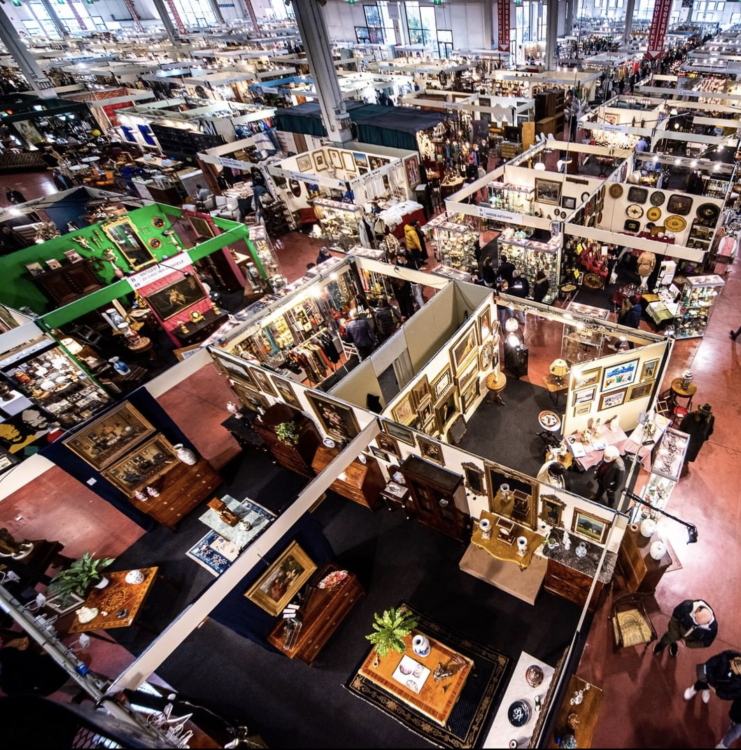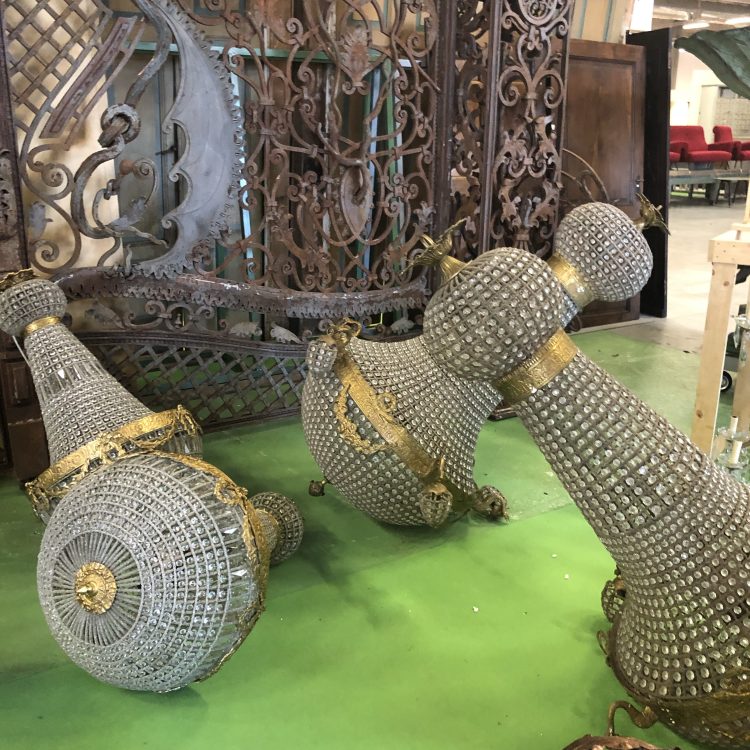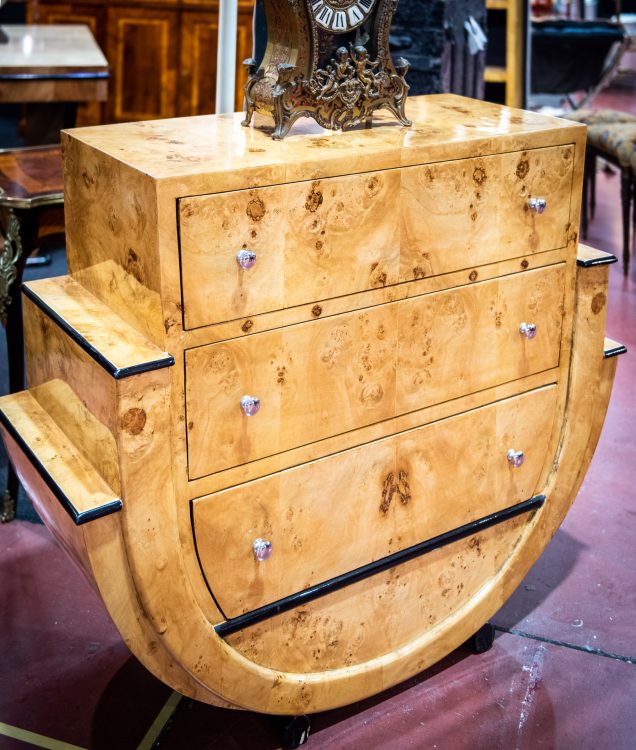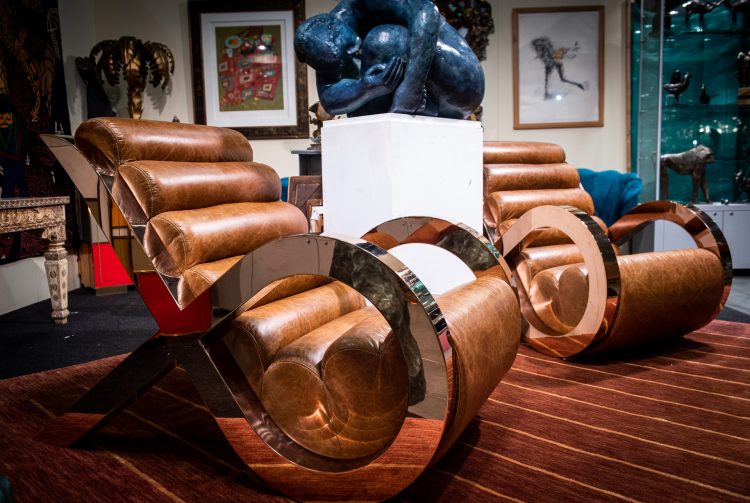It’s 8:30 a.m. on a chilly, wet morning in Parma, Italy, and the grounds of the city’s Fiera are already abuzz: Vendors back up trucks down the alleys between the fairgrounds’s hulking halls while others pushing precariously-loaded hand carts weave through the foot traffic (often with a cigarette in hand) calling occasional warnings of “attenzióne!” As soon as truck doors open, eagle-eyed buyers jump inside their beds and begin making offers on the contents—everything from 17th-century painted commodes to midcentury Murano glassware and piles of Turkish rugs. This is Mercanteinfiera (Italian for “Merchants at the Fair,” in reference to the Feria, the large exhibition halls of Parma), a biannual exhibition of over 1,000 antique vendors across Italy and Europe—with a smattering of exhibitors from Australia and the U.K as well—that has drawn an audience of designers, aficionados, and the most respected antiques dealers from around the world for the past 40 years.
Antiquing’s Best-Kept Secret
Yet, for such a high caliber of sale, the fair is less known in the US than, say, the puces outside Paris, which have their own cult following among American francophiles. “I didn’t even know about the fair until this trip,” confesses one designer as we ride together to the fairgrounds for our second day scouring the stalls. Though she takes buying trips regularly to England and France, Parma is new territory. “It feels like a sort of secret source,” she says.
That’s likely because, for many years, the fair’s audience, like its vendors, was mainly Italian (which may have something to do with Italy’s famously stringent art export laws, which required once registering any exported item over 50 years of age with the government—since 2020, registration is required only for items over €13,500). When I shared news of my foray to the Feria (and even more so as I showed snippets through Instagram), reactions from designers fell into one of two camps, boiling down to either: “I love it, isn’t it the best?” or “What is this and how have I never been?”
How to Get the Inside Track
In recent years, Mercanteinfiera leadership has sought to expand its reach, offering VIP access to design professionals through its application-based “Mercanteinfiera TOP program,” where they can shop early on designated “dealer days,” while also enjoying comped travel accommodations. The fair runs for nine days, but, as seasoned buyers know, the real trick is to get in early—ideally on “unload day,” the fair kickoff where vendors unload their trucks and build out their stalls. By the time Mercanteinfiera opens to the public two days later, some of the most sought-after vendors will have sold out of their entire booths. But, should you not be able to make the early bird days, not to worry: Vendors regularly restock their stalls with new inventory for the duration of the fair, when General Admission tickets can be purchased for 12 Euros.
Getting the Goods Back
Designers who have shopped abroad will be familiar with the shipping process, which involves many of the same options found at fairs across Europe (like EDET with its popular tagging system as well as shippers for a la carte pieces and containers for larger hauls). On our trip, a few wise shoppers were even coordinating containers to scoop up purchases made in France before heading south to Parma and making the trip across the Atlantic. That’s what we call smart shopping.
Want to know more, or interested in attending next year? Email Hadley.



